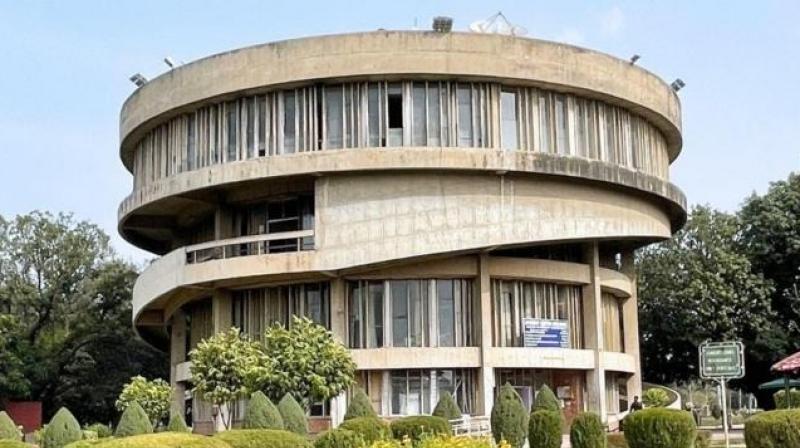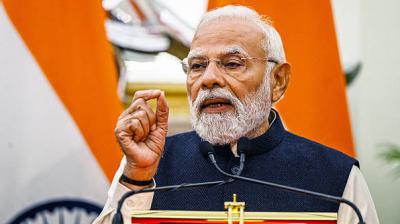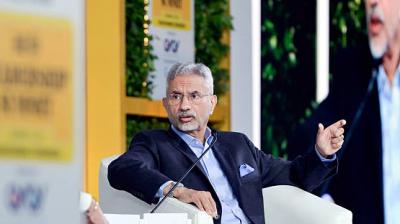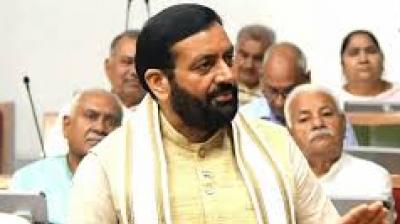
15 members of the Syndicate will now be nominated by the Vice-Chancellor (VC), whereas earlier the Senate used to select these members...
The decision of the Central Government regarding the restructuring of the administrative bodies of Panjab University, Chandigarh-Senate and Syndicate has become a matter of political and emotional boiling point in Punjab. Almost all the political parties of the state have strongly opposed the notification issued on October 28 regarding the restructuring. They have considered the restructuring as undemocratization of the university; they have termed it as a blow to the interests of Punjab and also called it a toy with the sentiments of Punjabis. Apart from the political parties, social and religious parties have also strongly raised the demand for the withdrawal of the above notification.
Threats of going to the High Court for the restoration of the administrative structure of the university that has been going on for 59 years have also been given by various parties and warnings of staging morchas are also being heard. What is this matter and how justified is the opposition to it? The answer to this question demands a thorough investigation of the entire matter. According to the disputed notification, the number of members of the Senate will be 31, whereas earlier it was 90.
15 members of the Syndicate will now be nominated by the Vice-Chancellor (VC), whereas earlier the Senate used to select these members from among itself. Out of the 31 members of the new Senate, 18 will be elected from different constituencies. Out of the remaining 13, 6 will be nominated and 7 will be government officials from Chandigarh and Punjab. These government officials include the Lok Sabha member of Chandigarh, the Chief Minister of Punjab, the Chief Justice of Punjab and Haryana High Court, the Higher Education Minister of Punjab, the Higher Education Secretary of Punjab, the Chief Secretary of Chandigarh UT and the Education Secretary of the UT itself.
The graduate constituency for the election of the Senate has been abolished. All these changes have been made on the basis of the recommendations of a special committee set up under the process initiated by the then Chancellor of the university (and Vice President of the country) M. Venkaiah Naidu ten years ago. The controversial notification was issued only after the report of this committee headed by the Vice Chancellor of the Central University of Punjab, Dr. R.P. Tiwari, was accepted by the current Chancellor of Panjab University (and Vice President of the country) C.P. Radhakrishnan.
Despite the strong opposition to the notification, the government constituencies are of the opinion that the administrative restructuring of the university is in no way unconstitutional or illegal. This has been done under the National Education Policy (NEP) approved in 2020. According to Section 72 of the Punjab Reorganization Act, 1966, the Central Government has the right to make amendments in the administrative and administrative structure of the university. It is also being argued that under the 1966 Act, Panjab University had become an inter-state institution, the administrative control of which had gone to the Central Government instead of the Punjab Government. Since then, most of the funds for the university have been coming from the central government, while the Punjab government has been holding back in this regard. Although the colleges of Ludhiana, Hoshiarpur, Moga, Muktsar Sahib, Ferozepur, Fazilka and Shaheed Bhagat Singh Nagar districts of Punjab are affiliated to Panjab University, the financial contribution of the Punjab government has never gone beyond 15 percent.
That is why the university has been getting 85 to 87 percent of its funds from the center. Similarly, the structure of Senate and Syndicate that existed earlier was from the time when all the colleges of Punjab except Patiala were affiliated to Panjab University. Later, the scope of Punjabi University, Patiala was also expanded and after the establishment of Guru Nanak Dev University, the entire Majha and more than half of Doaba were attached to that university. Such a drastic reduction in jurisdiction did not become the basis for reducing the number of Senate and Syndicate members of Punjab University. This discrepancy has now been removed.
Despite such arguments and legal points, the fact cannot be ignored that Panjab University is an important part of the heritage and legacy of Punjab. This university, established in Lahore in 1882, was also partitioned with the rest of the country in 1947. Its original building structure remained in Lahore. It took another eight years for the displaced university to establish its physical presence and permanent ‘home’ in independent India. Despite the coming into existence of Haryana in 1966, most of the colleges (and schools) of that state’s districts remained affiliated with Panjab University. It took a decade and a half for them to separate.
It is true that by becoming an inter-state university, its chancellorship went to the Vice President of India instead of the Governor of Punjab, but its soul remained Punjabi. It is still Punjabi and the fact that 65 percent of the colleges affiliated to it are from Punjab is a clear proof of this fact. Therefore, it is the duty of the Central Government to stop tormenting this soul further. This process should be initiated by withdrawing the Senate-Syndicate notification. This will not only benefit Punjab and Chandigarh, but will also give the central government a sigh of relief.













